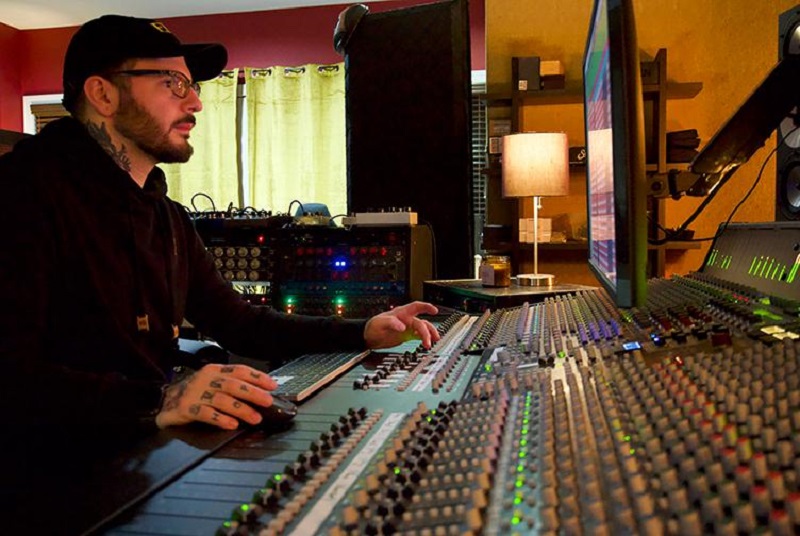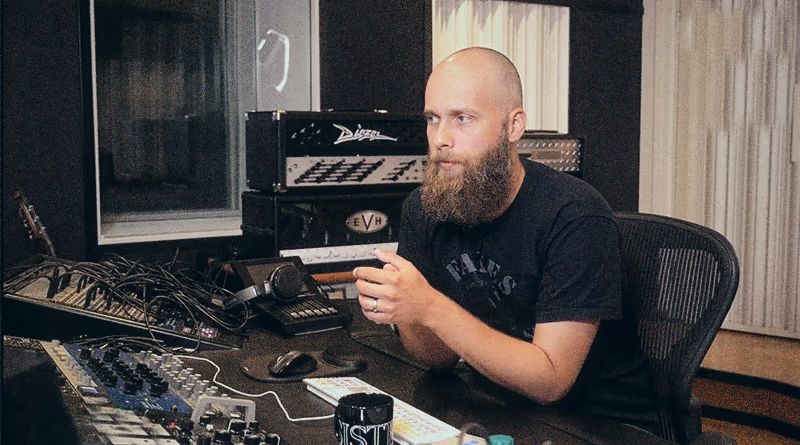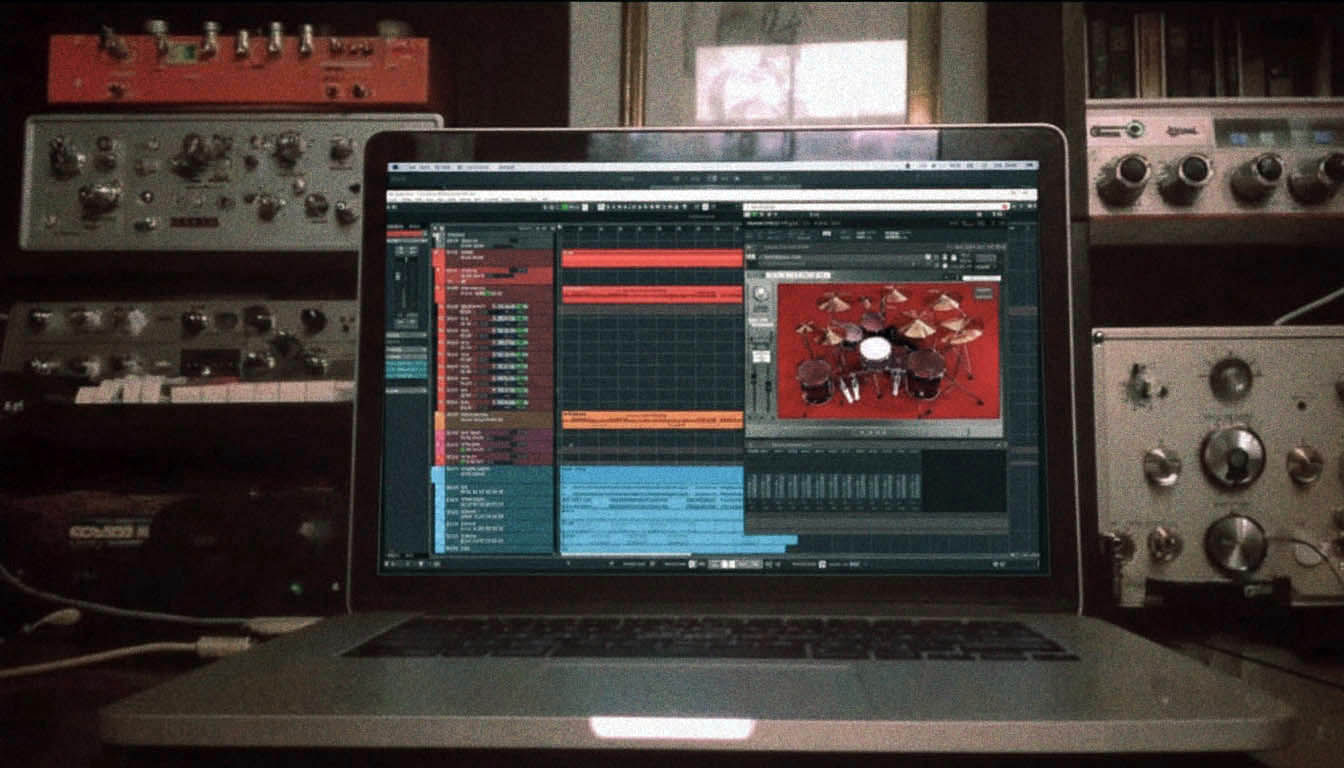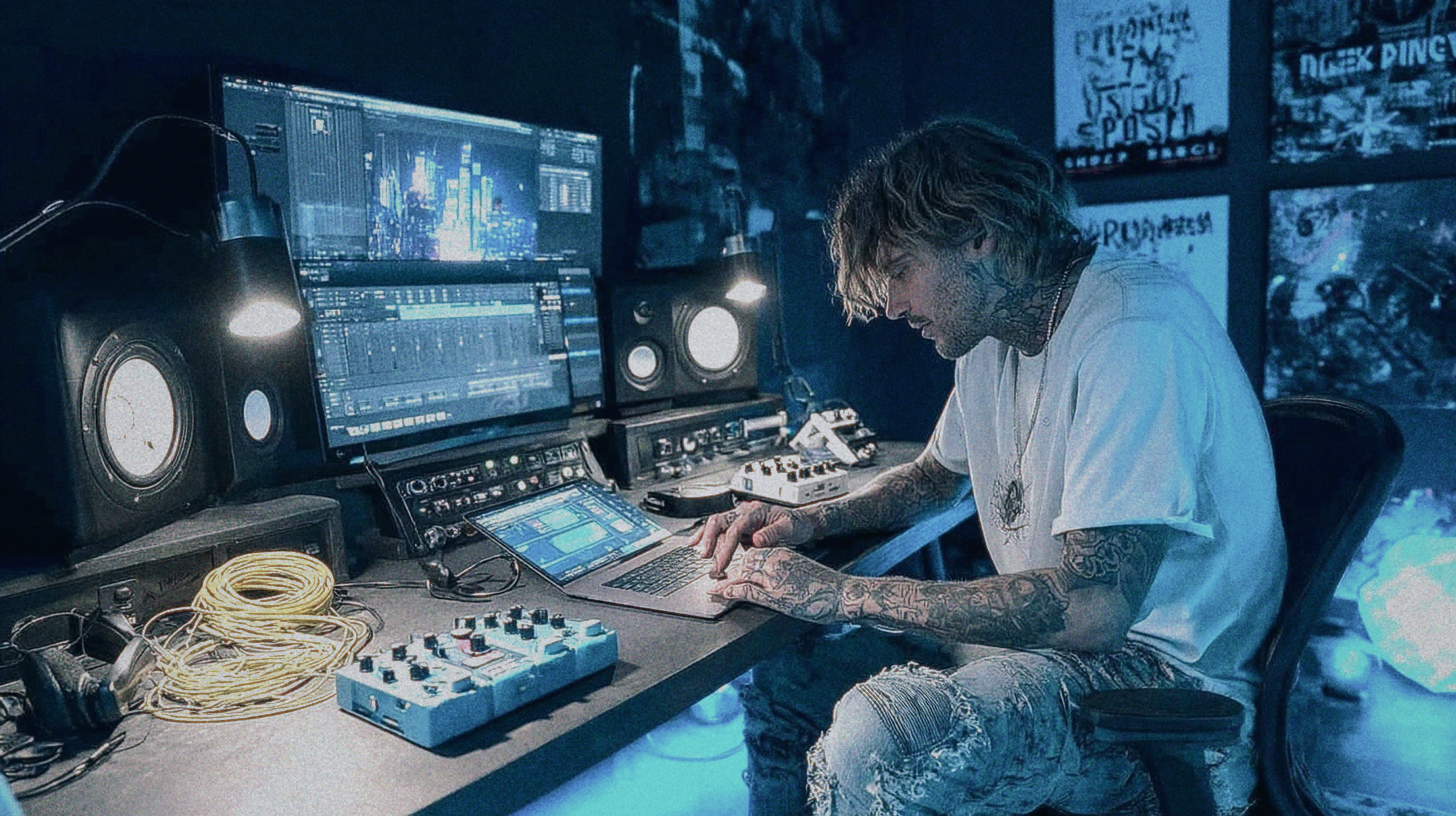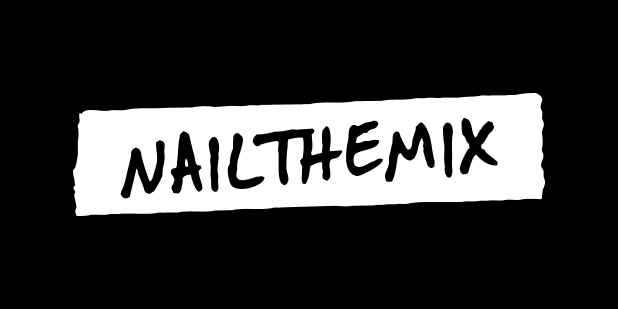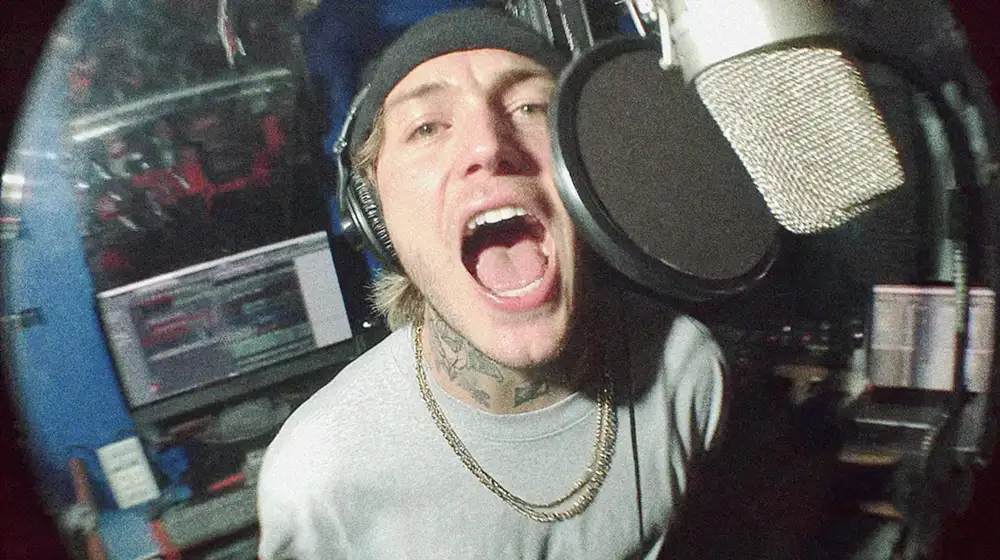
Best Microphones for Metal Vocals: From Budget to Brutal
Nail The Mix Staff
In metal, especially the heavy hitters like deathcore and metalcore, your vocalist is spitting fire, unleashing gutturals, and hitting those ear-piercing highs. Get the mic choice wrong, and all that raw power turns into a muddy mess or an icepick to the ears. Get it right, and you’ve captured pure aggression that’ll sit perfectly in a dense mix.
Choosing the ‘best’ microphone for vocals isn’t a one-size-fits-all deal, especially when we’re talking about the extreme end of the metal spectrum. It depends on your vocalist’s style, your room, your budget, and the kind of sonic destruction you’re aiming for. So, let’s dive into some killer options that’ll help you capture those face-melting performances.
Why Your Mic Choice Matters (Especially for Metal Vocals)
Before we start listing gear, let’s get why this is so damn important. A microphone is your first point of contact, the gateway between the vocalist’s raw energy and your DAW.
- SPL Handling: Metal vocalists are LOUD. Like, ‘shake the fillings out of your teeth’ loud. You need a mic that can take that punishment (Sound Pressure Level, or SPL) without distorting or, worse, breaking. Dynamic mics generally laugh in the face of high SPLs, while some condensers need a bit more care.
- Frequency Response: Every mic ‘hears’ sound differently. Some are flatter, some have a presence boost, some roll off the lows. For aggressive vocals, you often want something that can capture the mids without getting boxy, handle the lows of a guttural without flubbing out, and represent the highs of a shriek without sounding thin or overly harsh.
- Capturing the Core Tone: A growl has different sonic characteristics than a high scream or a melodic clean. The mic needs to complement that. A dark, smooth mic might tame a harsh screamer, while a brighter mic could add clarity to a deep growl or presence to cleans.
The Contenders: Mics That Can Handle the Heat
Okay, gear time! We’ll break this down into a few price brackets, because let’s be real, not everyone has a Neumann U87 budget when they’re starting out (or even when they’re not!).
Budget Beasts: Killer Vocal Mics Without Breaking the Bank (Under ~$300)
You absolutely do NOT need to spend a fortune to get killer metal vocal recordings. These mics are proof.
Shure SM57 / SM58 (Dynamic)
The undisputed godfathers of ‘can’t kill it, sounds decent on everything.’ The Shure SM57 (typically for instruments) and Shure SM58 (voiced for vocals with a built-in grille/pop filter) are practically identical under the hood. For around $100, these are your workhorses.
- Why they rock for metal: They handle insane SPLs like a champ. That signature mid-range bump helps vocals cut through dense guitar walls. They’re built like tanks – seriously, you could probably hammer nails with one.
- Actionable Tip: ALWAYS use a pop filter with an SM57 for vocals, and even with an SM58, an external one helps tame those plosive ‘P’ and ‘B’ sounds from aggressive deliveries. Get right up on it for that proximity effect beef, but watch out for it getting too boomy. A little EQ tweak cutting around 200-300Hz can fix that. A common mod is removing the transformer from an SM57 for a slightly more open sound, but try it stock first.
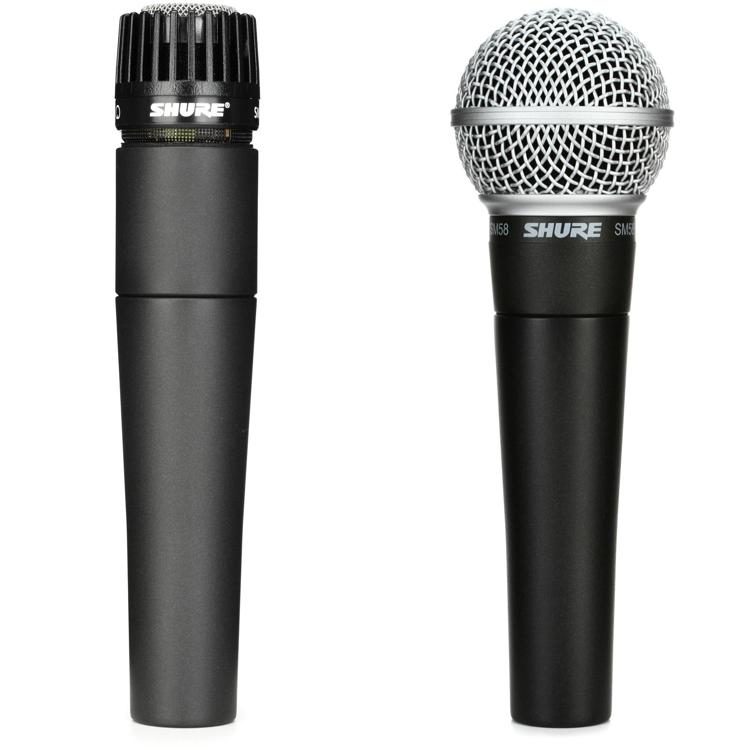
Audio-Technica AT2020 (Condenser)
If you’re looking for an entry-level condenser, the Audio-Technica AT2020 (around $100) is a super popular choice. It’ll give you more top-end detail and ‘air’ than an SM58.
- Why it can work: Good for capturing a bit more nuance, perhaps for cleaner metal vocals or even some styles of screams where you want that extra sizzle. It handles decent SPLs for its price.
- Actionable Tip: Being a condenser, it needs 48V phantom power. It’s also more sensitive to room sound, so if your ‘booth’ is a messy bedroom, you might pick up more reflections. A reflection filter (like those from sE Electronics or Aston) can be a good buddy here. Try angling it slightly off-axis if the top end is too much for a particularly harsh screamer.
Behringer XM8500 (Dynamic)
Okay, hear me out. For like $20-$30, the Behringer XM8500 is shockingly usable. It’s basically an SM58 clone. Is it an SM58? No. Is it good enough for demos, practice, or even surprisingly decent scratch tracks if you’re on an absolute shoestring budget? Hell yes.
- Why it’s on the list: Price. Pure and simple. It handles SPLs, has a similar vocal-friendly bump.
- Actionable Tip: Don’t expect miracles, but for the cost of a couple of beers, it’s worth having one in the locker. Use a good pop filter and treat it like you would an SM58.
Mid-Tier Workhorses: Stepping Up Your Vocal Game ($300 – $800)
This is where things get really interesting. You get professional-grade tools that are staples in studios worldwide.
Shure SM7B (Dynamic)
If there’s ONE mic synonymous with modern rock and metal vocals (especially screams and growls), it’s the Shure SM7B (around $399). From Corey Taylor to countless metalcore frontmen, this mic is a legend for a reason.
- Why it’s the king for heavy vocals: It’s incredibly smooth and takes EQ like a dream. It tames harshness and sibilance beautifully. Fantastic off-axis rejection means less room sound and bleed. The built-in pop filter is excellent, and it handles monstrous SPLs without flinching.
- Actionable Tip: The SM7B has a notoriously low output. You’ll need a preamp with at least 60dB of clean gain. If your interface preamps are struggling (leading to noise when cranked), invest in an inline preamp like a Cloudlifter CL-1 or a FetHead. Experiment with the presence boost and low-cut switches on the back – the presence boost can be great for articulation on gutturals, while the flat response is often preferred for piercing screams to avoid added harshness.
Electro-Voice RE20 (Dynamic)
Another broadcast legend that found its way into music studios, the Electro-Voice RE20 (around $449) is often seen as an alternative to the SM7B.
- Why it’s great for metal: Similar to the SM7B, it’s smooth, handles SPLs, and has great rejection. A key feature is its ‘Variable-D’ design, which minimizes proximity effect, meaning the low-end stays consistent even if the vocalist moves around a bit. This can be awesome for dynamic vocalists.
- Actionable Tip: Its consistency makes it fantastic for deep growls and spoken word sections. It can sometimes sound a bit more ‘open’ or ‘hi-fi’ than an SM7B out of the box. Try it without the foam windscreen for a slightly brighter tone, but have a good pop filter ready.

Rode NT1 (5th Gen) / NT1-A (Condenser)
The Rode NT1 (the new 5th Gen is around $259, the older NT1-A around $229) is a super popular condenser known for its incredibly low self-noise and fairly neutral, modern sound.
- Why they’re contenders: They offer excellent clarity and detail, making them great for metal bands that incorporate a lot of clean singing. They can also capture aggressive vocals well, though their brightness might need some taming with EQ. The NT1 (5th Gen) offers both an analog (XLR) and digital (USB – C) connection. The benefit of the digital connection is that there’s now a 32-bit float USB output, which is pretty wild for preventing digital clipping during tracking.
- Actionable Tip: The NT1-A can be quite bright and prone to sibilance on some vocalists. The newer NT1 models are generally considered a bit more balanced. If you find it too crisp on screams, try positioning the mic slightly off-axis (aiming at the mouth but from the side a bit) or use a darker pop filter. Don’t be afraid to use a de-esser plugin (like the Waves Sibilance or FabFilter Pro-DS) during mixing.
Aston Origin / Spirit (Condenser)
Aston Microphones burst onto the scene with mics that look cool, are built like tanks, and sound fantastic for their price. The Aston Origin (cardioid, around $299) and Aston Spirit (multi-pattern, around $449) are killer.
- Why they’re awesome: The Origin has a smooth, vintage-y vibe that can be great for adding character to vocals, both clean and screamed. The Spirit offers more versatility with its switchable patterns (omni, cardioid, figure-8). Both have a unique built-in mesh pop filter that works surprisingly well.
- Actionable Tip: The Origin can be a fantastic all-rounder if you need one condenser to do a lot. Try the Spirit in figure-8 if you’re in a well-treated room and want to capture a bit more natural space, or to do Mid-Side recording with another mic.
Premium Powerhouses: When Only The Best Will Do ($800+)
If budget isn’t a major constraint and you’re aiming for that top-tier studio sound, these mics deliver.
Neumann U87 Ai (Condenser)
The studio legend. The mic you see in countless photos of A-list artists. The Neumann U87 Ai (around $3,600+) is an industry standard for a reason. (Editor’s note: U87 prices can vary, but expect a significant investment.)
- Why it’s iconic: Versatility. It sounds good on almost anything. For vocals, it offers incredible detail, a smooth mid-range, and that ‘finished’ sound. It can handle high SPLs, especially with its -10dB pad engaged.
- Actionable Tip: While amazing for cleans, it can capture screams with frightening detail. This means any imperfections in the scream will be highlighted. It can be incredible, but also unforgiving. The pad is your friend for loud sources. Pair it with a high-quality preamp (like a Neve 1073 or API 512c) for best results. Given its sensitivity, good room acoustics are a must.
Neumann TLM 102 / TLM 103 (Condenser)
Want that Neumann sound without selling a kidney? The TLM series offers a more accessible entry point. The Neumann TLM 102 (around $700) and Neumann TLM 103 (around $1,200) are both excellent.
- Why they’re popular: The TLM 102 is compact, has a slight presence boost around 6-10kHz, and handles SPLs well, making it surprisingly good for aggressive vocals and even loud guitar cabs. The TLM 103 is brighter and more ‘modern’ sounding than a U87, very low noise, and captures a lot of detail.
- Actionable Tip: The TLM 103 can be quite bright and may accentuate sibilance on some screamers. The TLM 102 is often considered a bit more forgiving and warmer, and a great all-rounder for a project studio. Both benefit from a quality pop filter.
Manley Reference Cardioid (Tube Condenser)
If you hear a super bright, airy, ‘expensive’ sounding vocal on a modern pop or rock record, there’s a good chance it was a Manley Reference Cardioid (around $3,300).
- Why it’s revered for modern sounds: It has a very distinct, polished top-end. For metal, this can be incredible for cutting-edge clean vocals, giving them a radio-ready sheen. For screams, it can add an intense level of detail and aggression to the highs.
- Actionable Tip: This mic is BRIGHT. This can be amazing or it can be too much, depending on the vocalist. If your screamer is already very trebly or sibilant, this might be overkill unless you’re prepared for some serious EQ taming. It often pairs well with darker preamps to balance its character.

High-End Clones (Telefunken ELA M 251E, AKG C12, Neumann U47 style)
Original vintage U47s, C12s, and 251s cost more than a car. Luckily, companies like Telefunken (their own ‘reissues’ like the TF47, TF51), Warm Audio (WA-47, WA-251, WA-67, WA-87), Mojave Audio, and others make fantastic recreations or inspired-by designs for a fraction of the cost ($700 – $2000+).
- Why they offer value: They aim to capture the sonic character of these legendary tube and FET mics – think warmth, richness, larger-than-life sound. A WA-47 can bring that classic thick, warm U47 vibe to heavy vocals. A TF51 might give you that airy 251 top end.
- Actionable Tip: Research specific clones heavily. Some are closer to the originals than others. These mics often impart a strong character, which can be incredible for making vocals sit in a mix with authority. For metal, a U47-style mic can add serious weight and body to both growls and powerful cleans.

100+ Insanely Detailed Mixing Tutorials
We leave absolutely nothing out, showing you every single step
Beyond the Mic: Essential Gear and Techniques for Metal Vocals
Picking a great mic is step one. But to truly nail those metal vocals, you need to consider the supporting cast and how you use your weapon of choice.
The Unsung Heroes: Pop Filters and Shock Mounts
Seriously, don’t skimp here.
- Pop Filters: Those explosive ‘P’s, ‘B’s, and ‘T’s in a scream? They send a blast of air right at the mic capsule, creating nasty, low-end thumps called plosives. A pop filter (nylon mesh, metal, or dual-layer) diffuses that air. A pop filter can also be used to create space between the vocalist and microphone. By keeping the singer from getting too close, it minimizes excessive low-end buildup from the proximity effect, while still protecting the mic from plosives. For aggressive vocals, a good quality, sturdy pop filter like a Stedman Proscreen XL or a Håkan P110 is worth its weight in gold. Place it a few inches from the mic.
- Shock Mounts: These suspend the microphone, isolating it from vibrations coming up through the mic stand (foot tapping, rumbling bass amps, etc.). Condenser mics are particularly susceptible. Most good mics come with one, but if not, get one that fits.
Preamps: Giving Your Mic the Juice It Deserves
Your audio interface has built-in preamps, but their quality and gain range vary.
- Clean Gain for Dynamics: As mentioned with the SM7B, some mics (especially dynamics) need a LOT of gain. If your interface preamps get noisy when cranked, an external preamp or an inline booster (Cloudlifter, FetHead) is essential for a clean signal. Preamps in interfaces like Focusrite Scarlett (3rd gen+), Audient iD series, or Universal Audio Apollo are generally very capable.
- Colored Preamps for Character: Preamps like a Neve 1073 (or clones like the Warm Audio WA73-EQ, BAE 1073MPL) can add harmonic richness and weight. API-style preamps (like the API 512c or clones like the CAPI VP28) are punchier and more mid-forward. Running a vocal through one of these can add ‘that sound’ before you even hit an EQ. For instance, a 1073 can really thicken up a thinner scream.
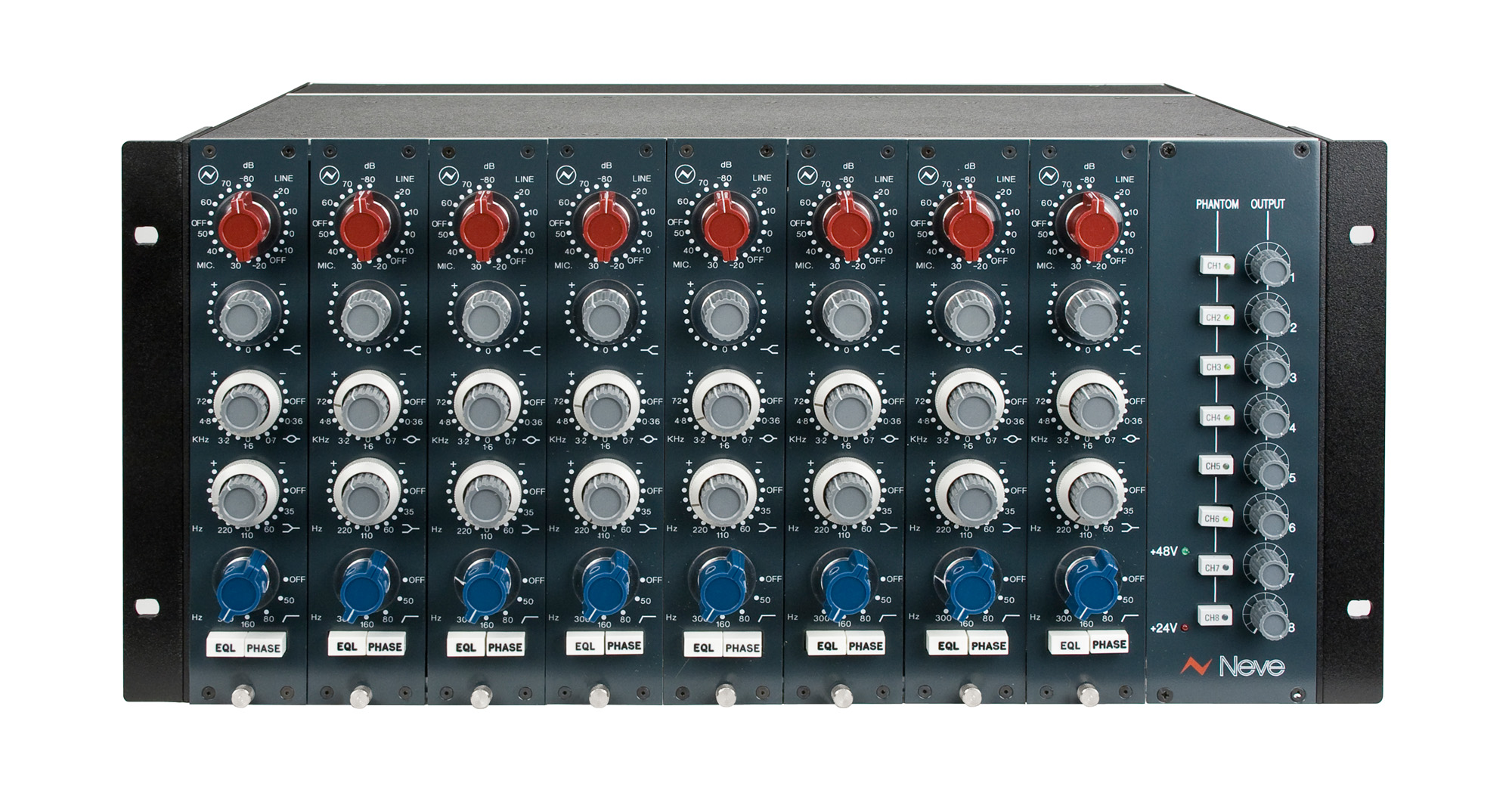
Mic Placement: Finding the Sweet Spot
There are no hard rules, only starting points. Experimentation is EVERYTHING.
- Distance & Proximity Effect: Most cardioid mics exhibit proximity effect – the closer the source, the more low-end boost. For thin screamers, getting closer can add body. For boomy growlers, backing off a bit (or using an omni mic if your room sounds good) can help.
- Off-Axis Positioning: If a vocalist is overly sibilant or harsh, try angling the mic slightly so they’re not singing directly into the front of the capsule. Aiming it towards the chest can reduce harshness and sibilance for some singers.
- Height: Experiment with mic height. Sometimes aiming slightly down towards the mouth from above, or slightly up from below, can change the tonal balance.
- For Deathcore/Metalcore: With an SM7B, many engineers have the vocalist “eat the mic” (get really close) to maximize intimacy and low-mid power, then sculpt with EQ. For condensers on cleans, 6-12 inches away is a common starting point.
- Room Placement: The placement of a microphone in a room can drastically affect the sound of scream vocals because the mic not only captures the direct voice but also the reflections of the room. Positioning it closer to walls or corners can create unwanted resonance and muddiness, while placing it in a more open space reduces reflections and gives a clearer, more controlled sound.
Room Treatment (A Quick But Vital Note)
A bad-sounding room will result in bad-sounding recordings, especially with sensitive condenser mics.
- What to do: Even basic treatment helps. Thick blankets, duvets, commercial acoustic panels (from GIK Acoustics, Primacoustic, etc.), or a reflection filter (like an sE Reflexion Filter PRO or Aston Halo) behind the mic can tame nasty reflections and flutter echoes. Focus on the area around the vocalist and mic. Deadening the space immediately around the mic helps get a more direct, focused sound, which is usually what you want for aggressive metal vocals.
Processing Your Brutal Vocals: The Next Step
Tracking with the right mic and technique is crucial, but the magic really happens in the mix. EQ and compression are your best friends for shaping those raw vocal tracks into something monstrous.
EQing Metal Vocals: Carving Space and Adding Bite
EQ is where you sculpt the tone, remove problem frequencies, and help the vocals sit in a busy metal mix.
- Key Moves:
- High-Pass Filter (HPF): Get rid of unnecessary low-end rumble. For screams, you can often go quite high, sometimes up to 150-200Hz, depending on the vocalist. For cleans or deep growls, be more conservative (80-100Hz).
- Cut the Mud: Boxiness and mud often live between 200Hz and 500Hz. Gentle, wider cuts here can clean things up massively.
- Presence & Intelligibility: Boosts in the 1kHz to 5kHz range can bring out articulation and aggression. Be careful, as this area can also get harsh quickly. Narrow Q boosts to highlight specific consonant sounds can be effective.
- Tame the Fizz/Harshness: Aggressive vocals can have nasty, fizzy high frequencies (often 6kHz-10kHz and above). Surgical cuts with a narrow Q can tame this without losing all the top-end energy.
- Plugin Power: Your DAW’s stock EQ is powerful. For more advanced features, check out FabFilter Pro-Q 3 (dynamic EQ is a lifesaver for vocals), or analog-modeled EQs like the PuigTec EQP-1A for broad tonal shaping.
- Want to dive deeper into EQ? We’ve got a whole breakdown on EQ strategies for mixing modern metal.
Compressing Metal Vocals: Control and Aggression
Metal vocals are incredibly dynamic – from whispers to full-blown roars. Compression evens out these dynamics, adds punch, and helps them stay audible.
- Why It’s Essential: Consistency is key. You don’t want screams disappearing or cleans getting buried.
- Common Approaches:
- FET Compressors (1176-style): Like the Waves CLA-76, Slate Digital FG-116, Arturia Comp FET-76. These are fast and aggressive. Great for pinning down wild screams and adding bite. Try a fast attack (maybe 3-5 on the dial) and fast release (6-7) with 4:1 or 8:1 ratio.
- Opto Compressors (LA-2A-style): Like the Waves CLA-2A, Universal Audio LA-2A Collection. Slower, smoother. Good for evening out cleans or after a FET compressor to further smooth things.
- Serial Compression: Using two (or more) compressors doing less work each is often better than one compressor slamming the signal. E.g., an 1176 for peaks, followed by an LA-2A for overall leveling.
- Learn more about taming those dynamics and adding punch on our metal compression secrets page.
Don’t Forget Saturation and Distortion!
Sometimes clean compression isn’t enough to make metal vocals cut.
- What it does: Saturation adds harmonics, making vocals sound richer, fuller, and more aggressive. It can help them slice through a wall of guitars.
- Plugin Picks: Soundtoys Decapitator is a classic for a reason – great for subtle warmth to full-on destruction. FabFilter Saturn 2 offers incredible versatility. Even your DAW’s stock distortion or amp sim plugins can be used subtly.
- Actionable Tip: Try blending in a heavily saturated/distorted version of the vocal track underneath the main vocal (parallel processing). This adds aggression without making the primary vocal sound overtly distorted. Or, use it as an insert with a gentle drive setting. For screams, this can really help them pop.
Nail The Mix: See How The Pros REALLY Do It
So, you’ve picked your mic, you’ve got some ideas for preamps and processing… but how do you really bring it all together to sound like the records you love? Choosing the best microphone for vocals is a massive first step, but it’s just one piece of the puzzle.
Imagine watching world-class producers – the actual engineers behind albums from bands like Gojira, Periphery, and Architects – take raw vocal tracks (often recorded with the very mics we’ve discussed!) and mix them from scratch. Showing you every EQ move, every compression setting, every bit of saturation, and explaining why they’re doing it.
That’s what Nail The Mix is all about. You get the multitracks, you watch the pros work their magic, and you learn the techniques to elevate your own mixes. If you’re serious about taking your metal productions to the next level, from tracking killer vocals to crafting a polished final mix, this is where you see it happen.
Ready to go beyond just picking gear and learn how to make it all sing (or scream)? Unlock your sound and learn how to mix modern metal beyond presets with Nail The Mix.
Architects on Nail The Mix
Henrik Udd mixes "Gone With The Wind" Get the SessionFinal Roar: Go Make Some Noise!
Choosing the best microphone for your metal vocals really boils down to understanding your vocalist, your sound goals, and your budget. Whether you’re rocking an SM58 in a treated closet or a U87 in a pro studio, the principles of good mic choice and technique apply.
Don’t be afraid to experiment! What works for one screamer might not for another. Rent mics if you can, borrow from friends, and most importantly, listen critically. Now go capture some brutal performances!
Get a new set of multi-tracks every month from a world-class artist, a livestream with the producer who mixed it, 100+ tutorials, our exclusive plugins and more
Get Started for $1
